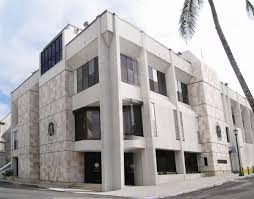NASSAU, BAHAMAS — Foreign exchange inflows through the banking system fell by over 50 percent during April through June compared to last year, the Central Bank has reported, with the regulator now forecasting that the economy could shrink by 15 to 20 percent this year.
Central Bank Governor John Rolle underscored the Bahamian economy “contracted sharply” over the first half of 2020, as a result of losses from the COVID-19 pandemic.
Rolle spoke during an unveiling of the bank’s monthly economic and financial developments report for June.
“International tourism was shutdown completely in the second quarter, other than the controlled reopening in June,” he said.
“Non-essential domestic activities were also closed down for most of the period, although construction was allowed to resume ahead of other sectors—providing some stimulus during the period. Otherwise, government assistance and unemployment benefits offered modest income replacement for households facing job losses.”
According to the Central Bank, tourist arrivals contracted during January-June,2020 by 14.1 percent growth in the same period of 2019; both air and sea traffic grounded to a halt in March related to COVID-19.
The most recent data from NAD showed that total visitor departures declined by 49.1 percent for the first half of 2020, a reversal from a 19.9 percent rise in 2019. Nevertheless, levels were cumulatively 64.4 percent higher than during the global recession of 2008 the regulator noted.
Rolle said: “As to available data on the economy and the impact of the export sector closure, on a quarterly basis, foreign exchange inflows through the Banking system fell by over 50 percent during April through June, in comparison to 2019, and were lower by almost 25 percent for the first half of the year.
“On the other hand, private sector purchases of foreign exchange from commercial banks—which signaled domestic demand adjustment—decreased less proportionately, by 22 percent during the second quarter and by about seven percent for the year to date.”
According to Governor Rolle noted that commercial banks COVID-19 loan payment deferrals have impacted about one-third of the outstanding Bahamian dollar private sector credit.
“As conditions are managed going forward, lenders have been encouraged by the Central Bank to limit their forbearance to just borrowers with identified needs, and to begin to adjust loan loss provisioning as they obtain clearer information about when individual borrowers are likely to return to their jobs,” he continued.
“Outside of the COVID-19 impact which is still delayed, the delinquency rate for private credit continued to fall over the first half of 2020, to just below eight percent of total loans compared to just under nine percent of such claims in June of 2019.
“While the Central Bank expects that this rate will soon start to deteriorate, it does not raise any specific solvency concerns, as commercial banks would be able to fully absorb such losses from current levels of excess capital.”
According to the bank, the arrears rate for private sector credit narrowed to 11.3 percent during the first half of 2020, from 12.2 percent in the prior year.
The short-term arrears rate was then 3.5 percent. The non-performing loan rate rate was 7.8 percent. The mortgage arrears rate was 15.2 percent compared to 16.6 percent in 2019.
The bank reported consumer arrears rate stood at eight percent compared to 8.9 percent in 2019.
The commercial arrears rate was 7.4 percent compared to 7.2 percent in 2019.
Rolle said: “Given the ongoing weight of tourism, the Central Bank now forecasts that the economy could shrink by 15 to 20 percent in 2020, following at least a six-month material pause inactivity, with only a gradual recovery to the tourism sector’s normal seasonal pattern. It is projected that a complete recovery in global tourism could be delayed through at least 2023. However, proximity to the USA could put The Bahamas on a slightly more accelerated recovery path.
“This means, nevertheless, that monetary and fiscal policies must stay protective of the Bahamian dollar currency peg, ensuring that the external reserves are stabilized or incrementally improve during 2021.”
He added: “There is, therefore, an ongoing urgency to expand other foreign currency earning activity, with foreign direct investments being at the top of this list.”






